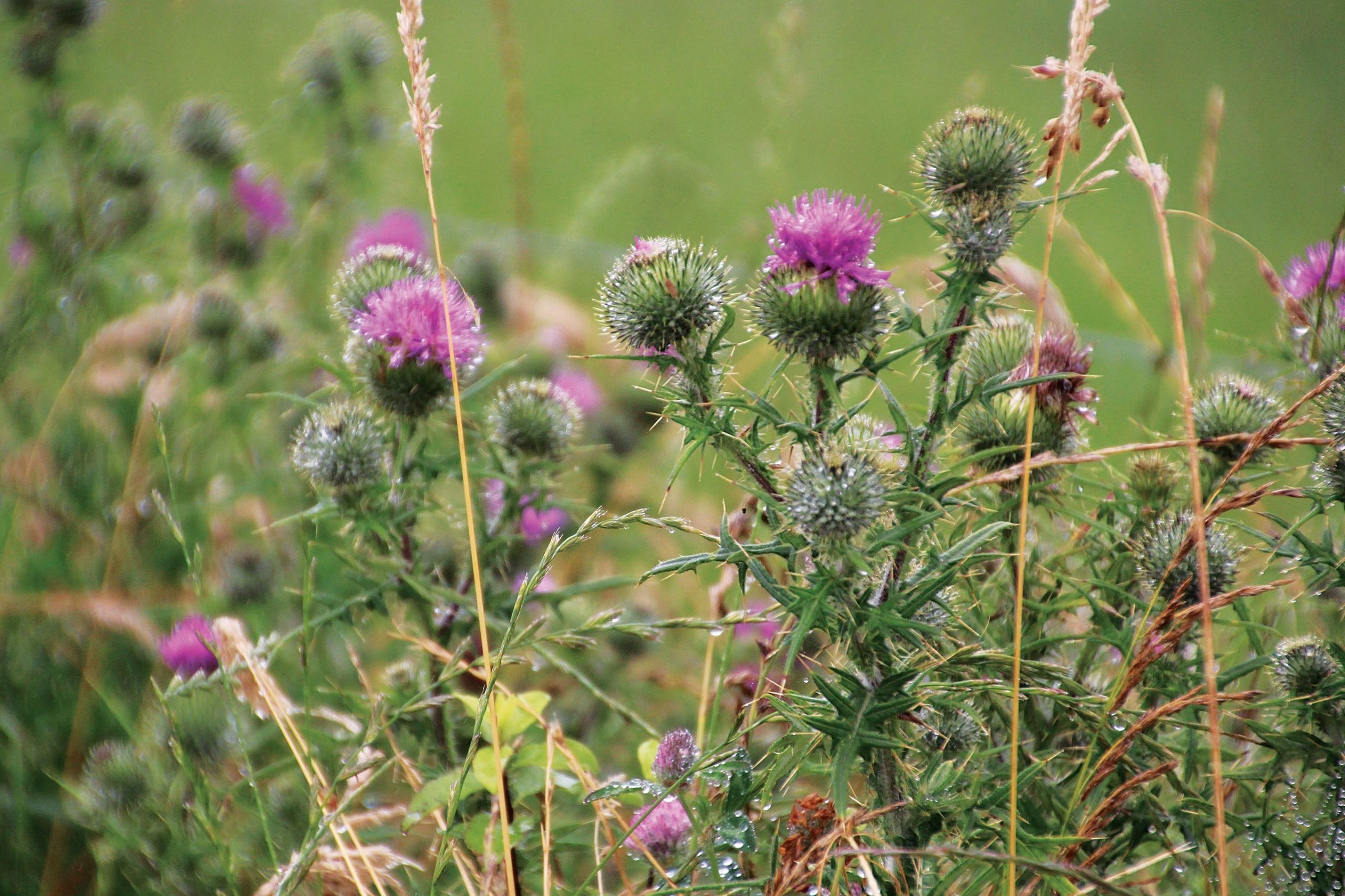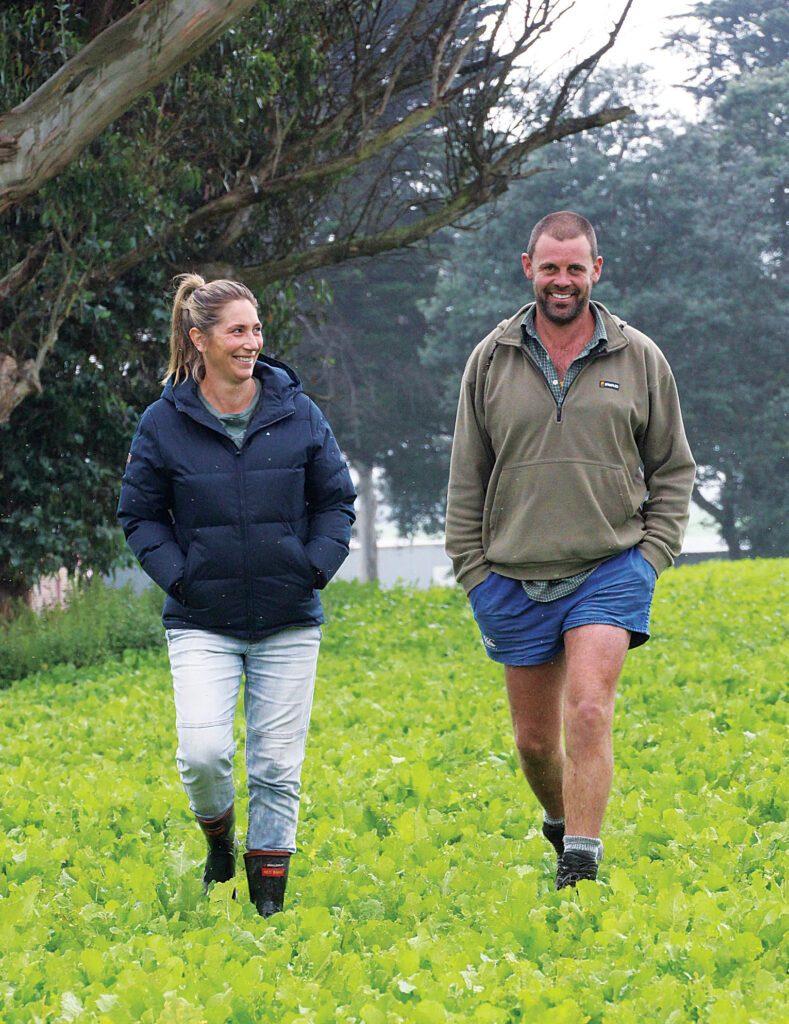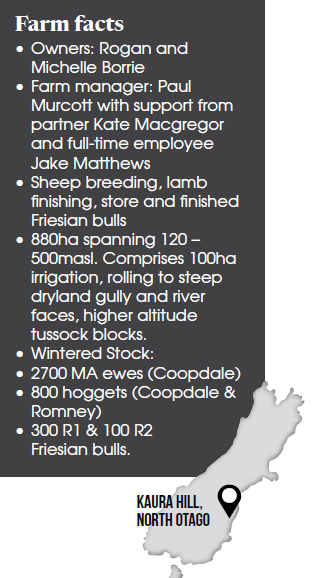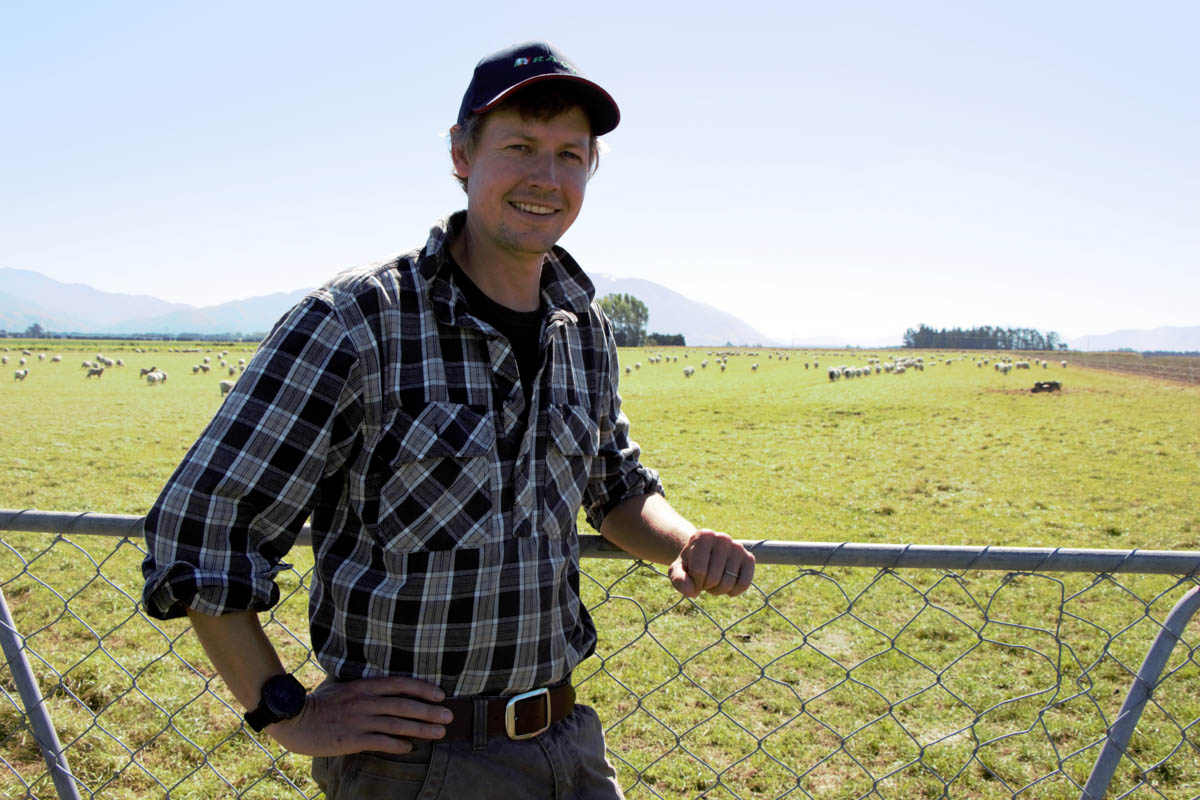Taming a prickly problem
Pasture redevelopment has been part of the solution to an infestation of nodding thistle, Lynda Gray writes.

Pasture redevelopment has been part of the solution to an infestation of nodding thistle, Lynda Gray writes.
The prickly problem of nodding thistle has influenced pasture development at Mt Pleasant.
Paul Murcott (36) has battled the biennial weed since taking on management of the North Otago farm five years ago using two-stage pasture establishment, HT brassicas, and MCPA.
When he started out, ryegrass, cocksfoot, clover and plantain were direct-drilled in spring and sprayed with MCPB about a month later. Unfortunately, the spray wasn’t the silver bullet he hoped for; although it knocked back thistles it also had the same effect on clover.
“We found that the clover didn’t fire or persist, and the spray was costly.”
A rethink and discussion with Sam Sturgess, Catalyst senior agronomist, led to a two-stage new pasture development plan. Now a mix of ryegrass and cocksfoot is direct-drilled in spring. It is lightly grazed in summer by ewes and lambs, then sprayed with MCPA before stitching in clover and plantain in the autumn. The change has reduced the thistle problem and greatly improved clover performance. The MCPA is also cheaper than MCPB ($30/hectare compared with $90/ha). Many would argue that the cost saving in spray is cancelled out by the increased fuel and tractor time of the two-stage process. But Paul says it’s the end result that counts. Sam adds that if nodding thistle takes hold in a single stage established pasture, it’s more than likely that a second run with a tractor and drill to stitch in clover will be needed anyway.

The pasture redevelopment process at Mt Pleasant kicked off with the soil testing of every paddock. The process and resulting fertiliser plan were overseen by Paul’s partner Kate Macgregor (39).
“Because we were spending a lot of money on irrigation and subdivision, we were mindful of lifting soil fertility so we could maximise the production potential of the new pastures,” Kate says.
The farm was split into different management zones with an associated target Olsen P range of 25-30 (irrigated areas); 20-25 (dryland paddocks), 18 (higher altitude paddocks); and 15-18 (gullies). The across-farm pH target is 6.
“It’s at the high end but we’ve found it’s about the right level for optimal soil health and structure.”
On the more difficult dryland country HT swedes precede the permanent pasture. It’s Paul’s preferred swede because of its herbicide resistance and palatability.
“We’ve tried other varieties but have found that the ewes perform better on the HT swedes. They suit our sheep and our system.”
The better dryland country has been developed with Italian ryegrass, fodder beet then permanent pasture.
Sub clover in the mix
Sub clover was added to the clover mix for the first time in autumn last year. It’s not grown widely in North Otago, but it has potential as an early and persistent legume in the drier parts of the region.
About 40ha was established with the goal of providing early season quality feed for lactating ewes.
“The goal is to get more lambs away in our weaning draft,” Paul says.
Ewes were set-stocked and lightly grazed the sub clover paddocks from August 20 until the first week of October. It’s too early to gauge the success of the legume but that should become obvious with seed set over the next year.
In line with the pasture developments has been changes to the stock run. Although Paul has stuck with Coopdales, he has bought in Romney hoggets, which will be mated to Romney rams to see how they compare.
The breeding cow herd was dispersed, and the cattle side is now focused on the supply of store and finished Friesian bulls sourced from the Borrie-owned dairy farms.
“It makes sense for us because we have a ready supply and they’re easy to quit if we need to.”
In autumn 300 bull calves arrive at about 200kgLW. They graze pasture, then winter on fodder beet. About a third are sold as stores in spring, a third finished in autumn and 100 taken through and finished off fodder beet in the spring.

Mt Pleasant’s major makeover
Pasture development has been one strand of a major makeover at Mt Pleasant. It included an all-weather four kilometre central laneway, the upgrading of stock water, installation of pivot irrigation and establishment of tree and shelter belts. There’s also been 20km of subdivision fencing mostly completed by Paul.
At the same time an environmental farm plan, a requirement for all North Otago Irrigation shareholders, has been developed and tackled.
Rogan and Michelle Borrie bought the dryland farm in 2017 which was extensively run with 2500 ewes and 70 beef cows.
The Borries own three North Otago dairy farms milking 2300 cows and three run-off blocks, all part or fully irrigated. Dairying is their focus, but Rogan has always had an interest in sheep and beef farming. His father converted a sheep and beef farm to dairying back in the 1990s and following time at Telford Farm Rogan progressed his farming career through dairying.
When Mt Pleasant came on to the market Rogan went along for a look with a friend. It sparked his interest and he saw it as an opportunity to diversify the pastoral business. It was also another platform to finish some of the Friesian bulls from the Borries’ dairy farms.
After buying the farm the next question of where to find a farm manager was answered by Kate, who at the time was Rogan’s fertiliser rep. Rogan had heard Kate had a boyfriend (Paul) moving to North Otago who was on the lookout for a farm manager’s job. Rogan did a bit of background checking on Paul, then quizzed Kate about him, asking if he might be interested in the role. Paul jumped at the opportunity, moving with Kate to Mt Pleasant in May 2017.
It’s been full-on ever since with the farm development as well as becoming parents to Mac in 2020. Their second child is due at the end of March.
For Paul Mt Pleasant was the perfect next step from Koromiko Station, a 12,000 stock unit sheep, beef and deer enterprise at Cheviot in North Canterbury where he was stock manager and learnt a lot.
The Borries had no particular brief for Paul on exactly what they expected to happen in terms of development beyond adding value through subdivision, regrassing, and irrigation. Throughout the process Paul, Kate and the Borries were in regular contact about what was planned and happening so there were no surprises.
There’s about 55ha of development left.
Paul says he didn’t anticipate the scale of the project but has enjoyed the process.
“It’s been a great opportunity for Paul, and we’ve been very lucky to have the positive support of Rogan and Michelle,” Kate says.
Kate, a self-employed certified nutrient management adviser, has also been a great support overseeing fertiliser, nutrient and environment plans.
Rogan says dairy farm income, plant and machinery has helped underwrite and fast forward development of the farm.
“Having the heavy machinery in-house has given us the ability to do the development faster and more efficiently.”
He says that Paul, with Kate’s support, has proven to be the ideal manager.
“I couldn’t expect more.”
Knock it early, knock it hard
Nodding thistle control with MCPA has been the best option at Mt Pleasant.
Kerry Harrington, Massey University associate Professor in weed science says from his research and experience MCPB rather than MCPA is the best way to deal with the weed in new pastures.
“If they are sprayed with MCPB when they are young seedlings you can knock them hard without any damage to the grass or clover, whereas MCPA will severely damage clover seedlings.”
Nodding thistle typically established after autumn rain in older pastures that had died back over summer. Autumn germination could be minimised by keeping the pasture dense and competitive, not over-grazing in summer by using supplementary crops such as lucerne, as well as selecting drought-tolerant species such as cocksfoot and Phalaris.
In established pastures MCPA or 2,4-D could be used although these could suppress clover growth so should be applied at lower rates while the thistles are seedlings.
Clopyralid (e.g. Versatill) mixed with MCPA or 2,4-D was the best treatment for resistant plants but was a last resort because it caused considerable damage to clover.
An option with mild nodding thistle infestations was to wait until just before the first seeds formed and weed wipe them with clopyralid or glyphosate.
Grubbing them out with a hoe beneath ground level was the best way to deal with minor outbreaks.
Three biological control agents have been introduced over the years to tackle nodding thistle: a receptacle weevil, crown weevil and seed predator Urophora solstitialis, but none have been overly successful.




